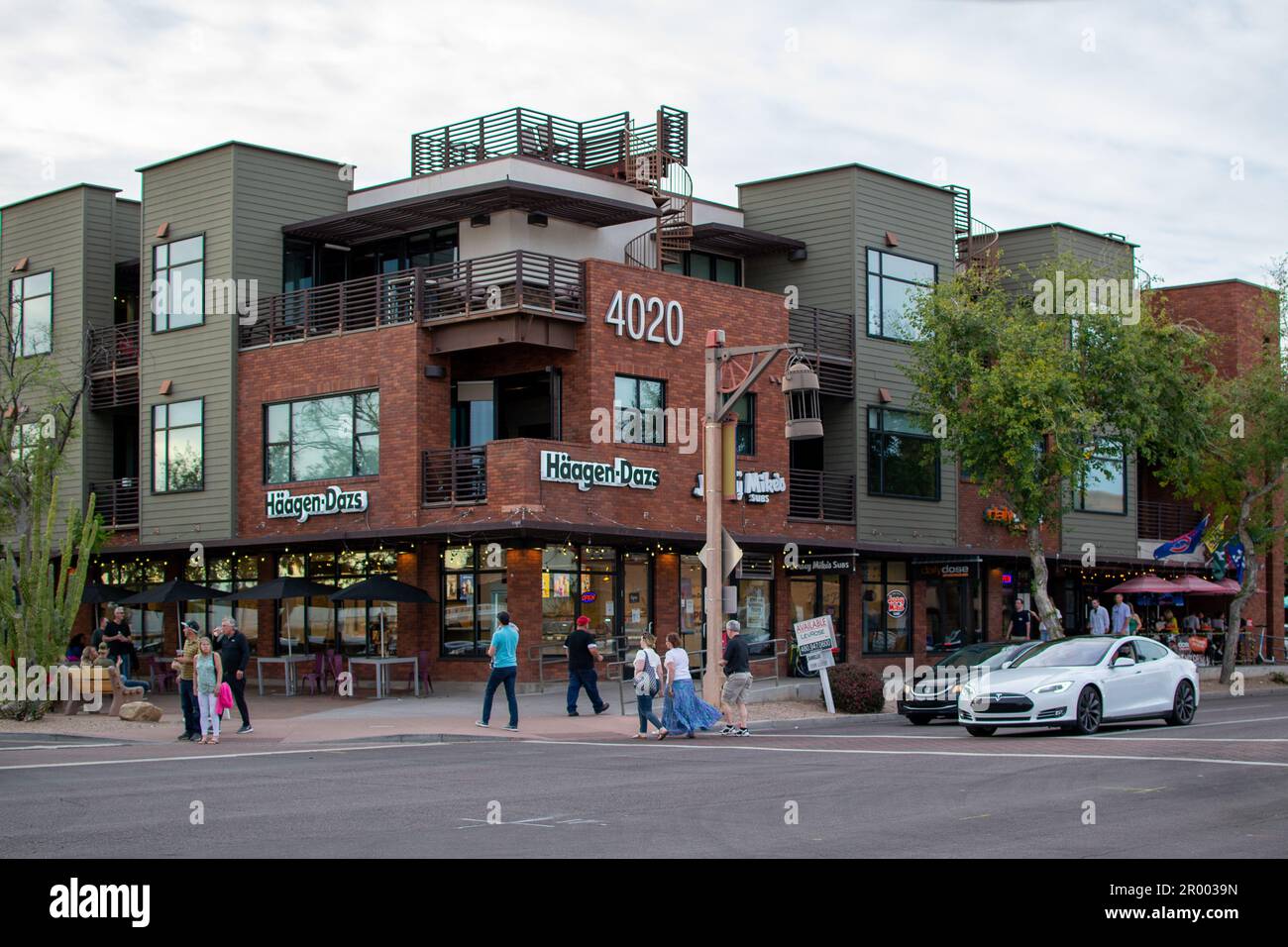
The Sun-Kissed Soul: Unpacking the Spirit of Arizona’s People
The Arizona sun, a relentless sculptor, has carved not just canyons and saguaros but also the very spirit of its people. From the ancient echoes of indigenous chants to the hum of modern tech hubs, Arizona is a crucible of cultures, a land of stark beauty and surprising resilience. To understand Arizona is to understand its inhabitants – a diverse, often paradoxical, yet deeply connected community forged in the crucible of a landscape that demands both respect and adaptation.
Stepping into Arizona is to enter a symphony of sun and sand, where the horizon stretches into infinity and the air shimmers with heat. This environment isn’t just a backdrop; it’s an active participant in shaping the human experience. "The desert doesn’t just surround you here; it gets into you," observes Maria Sanchez, a ceramic artist in Tucson, whose work often reflects the muted tones and stark forms of the Sonoran landscape. "It teaches you a different kind of patience, a deep appreciation for the ephemeral beauty of a monsoon storm, and an understanding that life finds a way, even in the harshest conditions."
This fundamental relationship with the land underpins much of what defines Arizonans. They are, by necessity, a people of adaptability. Summers demand a particular rhythm of life – early mornings, shaded afternoons, and the magic of cool desert nights. This isn’t merely survival; it’s a way of being that fosters a unique blend of rugged individualism and communal interdependence. When temperatures soar, neighbors share tips for keeping cool, and the simple act of a shared glass of iced tea becomes a ritual of solidarity.
Ancient Roots: The Enduring Indigenous Presence
Before the Spanish conquistadors, before the American pioneers, Arizona was, and remains, the ancestral home of numerous Indigenous nations. These communities, with roots stretching back millennia, are the first and most enduring Arizonans. From the intricate irrigation systems of the Hohokam that predated modern engineering, to the sky-high pueblos of the Hopi, and the vast, sovereign lands of the Navajo Nation, their imprint is indelible.
Today, Arizona is home to 22 federally recognized tribes, each with its unique language, culture, and traditions. Their presence is not merely historical; it’s a vibrant, living tapestry woven into the fabric of the state. The annual Heard Museum Guild Indian Fair & Market in Phoenix, for instance, is a testament to the thriving artistry and cultural pride of these communities, drawing visitors from around the globe to witness the unparalleled craftsmanship of Navajo weavers, Zuni jewelers, and Hopi katsina carvers.
"Our connection to this land is not just spiritual; it’s tangible," explains Lehi Nez, a Diné (Navajo) elder from Shonto, Arizona. "Every mountain, every mesa, every plant tells a story. We are the guardians of these stories, and we teach our children to listen to the land, just as our ancestors taught us." This deep, ancestral wisdom offers a profound counterpoint to the relentless march of modernity, reminding all Arizonans of the profound history beneath their feet.
Layers of History: Cowboys, Miners, and Mavericks
Following the Indigenous peoples, waves of new settlers arrived, each leaving their mark. The Spanish missionaries and conquistadors brought Catholicism, ranching, and new architectural styles, their missions dotting the southern landscape. The iconic Mission San Xavier del Bac, often called the "White Dove of the Desert," stands as a stunning example of this early European influence, a testament to faith and artistic endeavor in a remote land.
The 19th and early 20th centuries ushered in the era of cowboys, miners, and homesteaders – the archetypal figures of the American West. Arizona became a land of opportunity, hardship, and legend. Towns like Tombstone, with its infamous O.K. Corral shootout, etched themselves into the national consciousness, embodying the raw, untamed spirit of the frontier. Copper mines, like those in Bisbee and Morenci, fueled the nation’s industrial boom, drawing a diverse workforce from around the world and creating boom-and-bust cycles that shaped communities for generations.
This period fostered a fierce independence and a "can-do" attitude that still resonates. Arizonans learned to rely on themselves, to improvise, and to face challenges head-on. "My grandfather always said, ‘In Arizona, you learn to fix things yourself, or you don’t get by,’" recalls Jack O’Malley, a third-generation rancher near Prescott. "That spirit of self-reliance, of knowing your land and your tools, that’s still very much alive here."

The Modern Melting Pot: Growth, Diversity, and Reinvention
Fast forward to the 21st century, and Arizona presents a different, yet equally dynamic, picture. It’s one of the fastest-growing states in the nation, a magnet for those seeking sunshine, opportunity, and a fresh start. Phoenix, the state capital, has exploded into a sprawling metropolis, a hub for technology, aerospace, and innovation. Tucson, with its vibrant arts scene and prestigious university, maintains a more laid-back, eclectic charm.
This growth has brought an unparalleled diversity. "Snowbirds" – seasonal residents from colder climates – flock to the state each winter, swelling the population and contributing to the economy. Retirees, drawn by the mild winters and active lifestyle, have established thriving communities. A significant Hispanic population, with deep roots in both Mexico and the state’s historical past, enriches the cultural landscape with vibrant traditions, cuisine, and language. Additionally, a growing influx of young professionals and families from across the U.S. and beyond is transforming Arizona’s urban centers into cosmopolitan melting pots.
"I moved here from Chicago for the weather and a job in tech, but I stayed for the community," says Sarah Chen, a software engineer in Scottsdale. "There’s a sense of openness here, a willingness to embrace new ideas, perhaps because so many people are transplants themselves, looking to build something new." This spirit of reinvention is a hallmark of modern Arizonans, many of whom have come seeking new horizons, unburdened by the traditions of their previous homes.
The "Arizona Spirit": A Unique Blend
Despite their diverse backgrounds, certain threads connect Arizonans. There’s a shared appreciation for the outdoors, whether it’s hiking the red rocks of Sedona, kayaking on Saguaro Lake, or stargazing in the dark skies of Flagstaff. The state’s natural wonders, from the Grand Canyon to the saguaro forests, instill a sense of awe and a desire to preserve these unique environments.
There’s also a noticeable sense of community, often surprising in a state experiencing such rapid growth. Perhaps it’s the shared experience of living in a sometimes-challenging environment, or the collective pride in their unique home. Local festivals, farmers’ markets, and community events thrive, fostering connections in an increasingly digital world.
Politically, Arizona is often described as a swing state, reflecting its internal diversity. This means Arizonans are accustomed to lively debate and a wide spectrum of viewpoints, fostering a culture of robust, if sometimes passionate, discussion. They are often skeptical of government overreach, valuing individual liberty and self-determination – a legacy of their frontier past.
Challenges and the Future
Living in Arizona also means confronting its unique challenges, most notably water scarcity in a desert environment and the increasing intensity of its summer heat. These issues are not abstract; they are daily realities that drive innovation and civic engagement. Arizonans are at the forefront of sustainable water management, urban planning to mitigate heat, and renewable energy development. "Water isn’t just a resource here; it’s a conversation," says Dr. Emily Peterson, a hydrologist at Arizona State University. "It forces us to be incredibly creative and collaborative, to think long-term about how we can thrive in this beautiful, yet fragile, ecosystem."
Looking ahead, the people of Arizona are poised at an exciting crossroads. They are a population constantly evolving, shaped by ancient traditions, a rugged history, and the relentless pull of the future. They are the artists who capture the desert’s fleeting light, the scientists who harness the sun’s energy, the ranchers who tend to the land, and the entrepreneurs who build new industries.
In essence, the people of Arizona are as diverse and captivating as the landscape they inhabit. They are a testament to human resilience, adaptability, and the enduring power of community. Whether basking in the golden glow of a desert sunset or navigating the bustling streets of a modern city, Arizonans carry with them a sun-kissed soul – a unique spirit forged by the land, imbued with history, and forever looking towards a vibrant, if sometimes challenging, future.

.jpg?w=200&resize=200,135&ssl=1)

